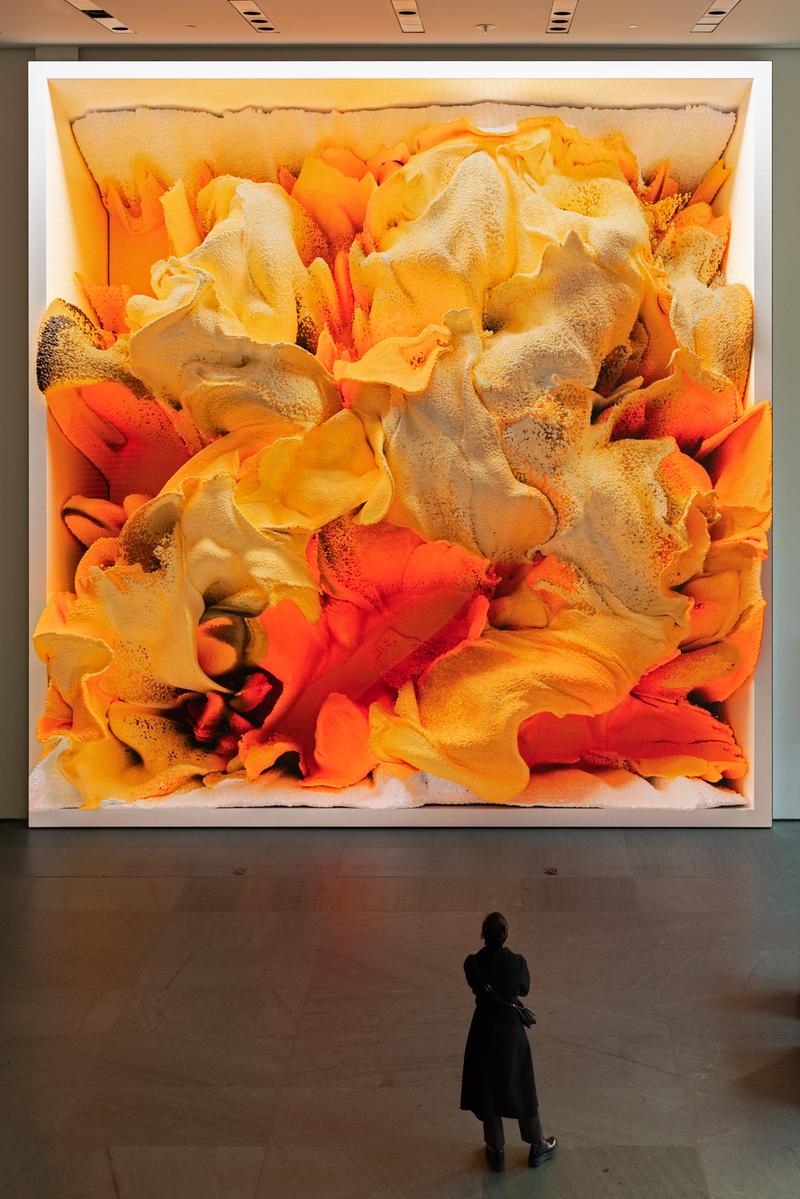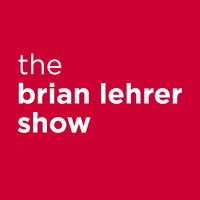[music]
Brian Lehrer: Brian Lehrer on WNYC, and on this final day of the membership drive. It's also the final installation in our round-up of closing soon. Don't blink or you'll miss them art shows around town. Your weekend is already spoken for with the shows at the Whitney, The Met, and Queens Museum that we talked about earlier in the week. They were closing this Sunday. You have a little longer for the amazing shows at El Museo del Barrio that we talked about yesterday, and the one today where we're going to direct you to a show that got extended. We thought it was going to close around now, but it got extended.
It's Refik Anadol's giant digital work Unsupervised. It was going to close this weekend, but will now be on view at MoMA, the Museum of Modern Art through April 15th. If you go to MoMA, maybe to see the Oppenheim show that does close tomorrow, you can't miss Unsupervised. It's in the lobby area just past the ticket desks. To talk about Unsupervised and the role of the artist with a work like this that utilizes AI, artificial intelligence, we're joined by Michelle Kuo, curator of painting and sculpture at the Museum of Modern Art. Michelle, thanks for coming on. Welcome back to WNYC.
Michelle Kuo: Thank you so much, Brian.
Brian Lehrer: The description of the work on your website asks, "What would a machine dream about after seeing the collection of the Museum of Modern Art?" Unsupervised answers that question.
Michelle Kuo: It poses some answers. It's really an experiment. The artist Refik Anadol created a custom machine-learning model. The artists themselves created an AI model that is creating constantly morphing forms. You see it as a high-resolution, large-scale screen on the ground floor in our public space right next to the sculpture garden. You can sit and linger and watch and some people stay for hours, which is pretty extraordinary.
Brian Lehrer: Yes, so explain to people what they're seeing as they stare at the giant screen. I watched part of a video you put out about this and in all the ways that people are freaked out about artificial intelligence these days, can chatGPT replace people who are software engineers, can it write fake college essays for people? It was pretty freaky to watch this artificial intelligence generator come up with images that are based on the stuff at the museum.
Michelle Kuo: Yes, it's interesting because what it's creating is new. It's not reproducing anything. The artist Refik Anadol devised his own custom machine-learning model. What it's doing is really fascinating. It's actually learning about MoMA's collection, learning, learning, learning for months. Then it's architecting a map of the collection data as it learns. It's creating classifications and that's actually why the work is called unsupervised.
Normally AI or machine learning is supervised learning. It means that you might have a set of information and actually, humans are the ones that are tagging images, let's say, with corresponding words. You would look at a picture of a pencil and say, this is a pencil, but in unsupervised learning, actually the machine learning model itself is doing a lot of that classification and tagging.
Refik is actually playing with almost another collaborator in opening up a little bit of an unpredictable space to say, "Well, how would a machine categorize or even parse all of this information about works of art over the past 200 years?" The result is really fascinating because you get this very complex map that's built of the collection data. We, humans, might do something like, "Okay, I'm going to put all the red paintings over here on the right and all the blue paintings over here on the left."
This machine learning model is so complex, it's actually using over 1,000 parameters to create different classifications, some of which we don't even understand, to make this map almost like a galaxy of different clusters. Then what it's doing in concert with the artist is flying around that galaxy. In between all those clusters is empty space, empty space that represents the holes of history, things that don't exist. It's saying, "Okay, nothing exists here, but what could exist, what might exist?" It's generating forms and visions basically based on its "Dream of what might exist."
That's the wild thing that's happening as you're watching this work unfold in real-time. They're actually three different works and they represent different visualizations of the machine learning model flying around and creating these forms. Some of them look very much reminiscent of a Cezanne watercolor or a Russian book or a very Oppenheim surrealist painting, but it's never going to reproduce anything exactly. In fact, Rafik has tuned the machine learning model, if you will, away from reality and toward a more surreal approach. It's really creatively generating new forms based on this.
Then some of the forms themselves are then layered with almost like a diagram or a diagrammatic representation of the machine learning models decision-making in real-time. It's almost like watching a dance or a performance with the musical notation or a score overlaid on top of it. That's when you get even more abstract representations as well. It's a wild way of visualizing unrealizable and unfathomable complexity that is not made for human perception. Somehow it's making it perceptible to us.
Brian Lehrer: Yes, and as I watched the video and listeners, by the way, we have posted a related video on our webpage. If you want to see some of this that MoMA is making available that way, it was definitely mesmerizing. It had this bit of constantly unfolding mystery, not like looking at a painting, for example, but what's going to show up next? Can I figure out what it refers to? The question, what would a machine dream that you hang this on, reminds me of Philip K. Dick's book title, Do Androids Dream of Electric Sheep? The basis of the movie Blade Runner, which is pretty dystopian. Is there a bit of a threat implied in using AI to generate art?
Michelle Kuo: I think that for an artist like Rafik, AI is something that reflects human intention. Humans after all are the ones that have devised these incredibly complex algorithms. That obviously can be both terrifying and exhilarating. I think the role of, for example, science fiction writers like Philip K. Dick has been to speculate in a fantastic and dystopian way about what might happen with these new kinds of technologies that continue to confront humanity over the past 100 years.
Other artists have really looked to a different approach, which is to say, I'm not just going to reject this new technology, I'm going to think about getting in there at the highest levels or at the scale of high tech and turn the tables. Can we take existing technology and not just accept or reject it? Can we actually change it? Can we do something differently? That scales--
Brian Lehrer: In our last 30 seconds, because I want to get this in, we've been doing this series all week about shows that are about to close. There's a big new show you're involved with opening on Sunday, all about video art and social change. Does this work we've been discussing Unsupervised intersect with the new show? We've got 20 seconds.
Michelle Kuo: Absolutely. It intersects with artists from the 1960s on in the new show who are doing the same thing with video, saying video is a new technology at the time, it's newly accessible, but it's also something that we would like to change. We'd like to get in there, take these tools and maybe do something differently with them than that's just being offered to us. Artists are really at the forefront of change, both technological and social. It's just incredible to see what they've moved.
Brian Lehrer: We leave it there with Michelle Kuo from the Museum of Modern Art. Unsupervised remains on display through April 15th. Thank you so much. This was really interesting.
Michelle Kuo: Thank you so much for having me.
[music]
Copyright © 2023 New York Public Radio. All rights reserved. Visit our website terms of use at www.wnyc.org for further information.
New York Public Radio transcripts are created on a rush deadline, often by contractors. This text may not be in its final form and may be updated or revised in the future. Accuracy and availability may vary. The authoritative record of New York Public Radio’s programming is the audio record.


